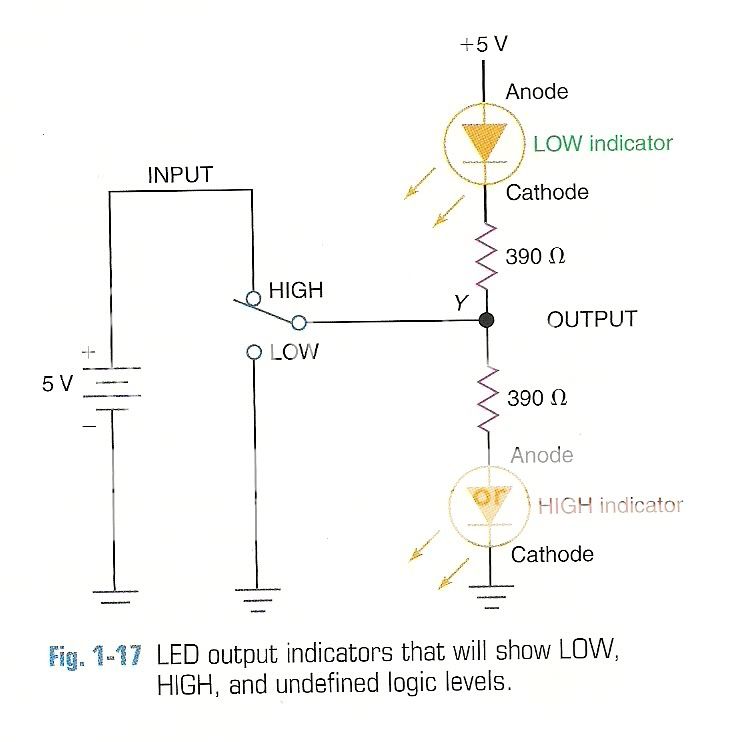Kalagaraz
Newbie level 4

Ok so my book says when switch is high, the low led won't light. But why not? Doesn't it have a straight path from +5v to ground if it goes straight down on right side?
Same thing when it's LOW. Why can't the +5v just flow straight down at all times?